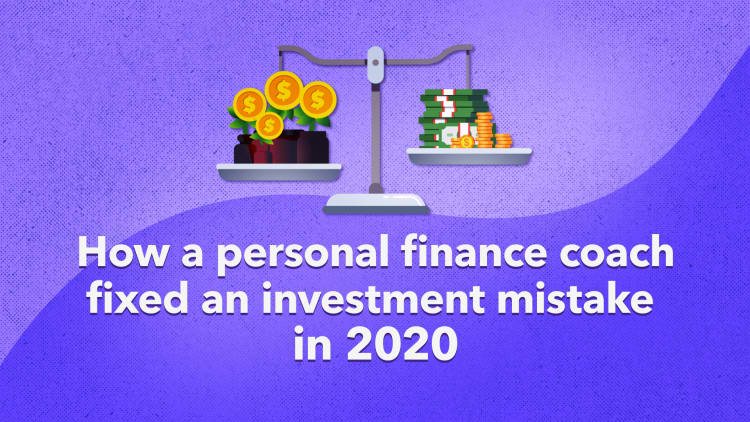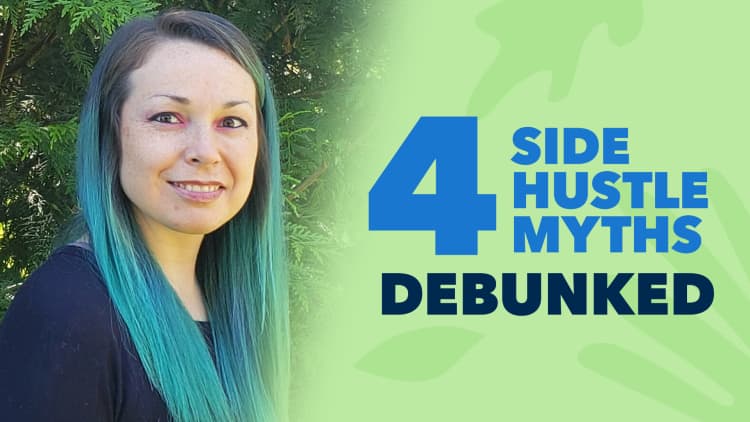In 2015, I graduated law school with six figures of student loan debt. Since I had no idea how I'd ever pay them off, I resigned myself to the fact that these loans would be with me for the foreseeable future.
When my first payment came due in 2016, I put my loans on auto-pay and tried not to think about them and, for years, I didn't.
More from Grow:
How to earn passive income via affiliate marketing
What motivates this travel nurse who earns $7,000 a month in Hawaii
I quit my 9-to-5 to grow my side hustle: How I got my finances ready
In 2018 I stumbled upon a YouTube video with the title "I Owe $200,000 in Student Loans." It was made by a woman about my age and seeing how distressed she felt hit home. I could easily see myself in her, and the harsh reality of having a mortgage's worth of student loan debt finally sunk in.
I realized that as long as I had this massive debt hanging over my head, it would impact my ability to buy a home, save for retirement, and prevent me from leaving my well-paying but unfulfilling career.
Determined to free myself from the financial hole I had put myself in, I set a goal to tackle my student loan debt once and for all. I haven't looked back since.
Now, just three years later, I'm almost debt-free and I've been able to share my story with thousands of people with my Instagram account Babe on a Budget Blog. Here is my best advice.
Figure out what you owe
This may seem obvious, but ignoring your student loans won't make your student loans go away. I shied away from adding up my student loan debt for years. Figuring out what I owed and getting organized was the first step to getting my student loans under control.
Luckily, you can do this pretty easily by going to StudentAid.gov for federal loans or by pulling a credit report if your loans are private. The hard part is ripping off the band-aid and actually doing it.
For those just getting started, I recommend using a simple spreadsheet where you can input all your loans, their corresponding interest rates, and your total debt balance. This will help you track your progress as you go, and also help you figure out which loans to prioritize.
Take the time to learn about your loans
Once I figured out how much I owed, I was overwhelmed. All I knew was that I had this huge balance, but no idea how my loans worked or why my balance had ballooned even after years of making payments.
So I started to do my research. I called my lender, I read articles and blogs, I watched videos, and really invested the time to understand my student loans, so I knew how to best approach them. If I had known what I know now — that interest accrues daily, or that all my unpaid interest would be added to my principal balance at the end of my grace period — I could have saved myself thousands of dollars, and a lot of frustration.

Video by Courtney Stith
Pick a debt repayment strategy that works for you
I've used a combination of both the snowball method and the avalanche method to pay off my student loans, and this hybrid-strategy has worked out really well for me.
I started off using the snowball method, a strategy where you pay off your loans from smallest to biggest balance, and quickly knocked out a few of my smaller loans first, just to get them out of the way.
Once I paid off all my small loans, I reevaluated my strategy, and switched over to the avalanche method, a method where you pay off your loans from highest to lowest interest rate.
Since my total loan balance was so high, I was accruing a ton of interest every month. At one point, my loans were accruing more interest every month than I was paying for rent. So for me, I really focused on paying off the loans that were costing me the most and continued to knock out one after the other.
Paying off a few small loans early on gave me the confidence to get started. Now that I've switched to the avalanche method, minimizing my interest is what keeps me super motivated.
Before picking a debt-payoff strategy, I recommend doing some research and running your own numbers to see what best suits your own personal situation. But there are a ton of tools and online resources to help get you started. I'm personally a fan of unbury.me because it is free and simple to use.
Spend intentionally and cut unnecessary expenses
Once I got serious about paying off my student loans, I took some time to evaluate my spending. I started by removing everything from my budget that I knew I wouldn't miss. I cancelled my unused subscriptions, stopped going to the happy hours I never enjoyed, and stopped buying outfits to wear to a single event.
I thought carefully about the things I really enjoy spending money on. I gave myself permission to spend on those items and experiences and budgeted a set amount of money, about 5% of my income, for those things.
At one point my loans were accruing more interest every month than I was paying for rent.
Giving myself room to spend on the things that bring me joy has made the process of paying off my loans more sustainable. And cutting out the stuff I really never cared about has given me extra money to throw at my student loans.
While this may look different for everyone, finding the balance between cutting my expenses and spending intentionally has been a really helpful exercise, not only for paying off my loans, but for reaching my other financial goals as well.
Look for ways to increase your income
One thing I learned early on is that you can only cut down your expenses so much. At some point you will run out of things to cut from your budget, so looking for ways to increase your income is key if you want to speed up the payoff process.
Luckily, there are a lot of options out there to make extra income. You just need to find what's right for you. This may mean picking up over time at your current job, getting a part-time job, or even starting a side hustle and selling your own products or services.
For me, increasing my income has been the biggest contributor to my success. Over the past few years I've changed jobs to increase my salary, advocated for raises and bonuses, and opened up an Etsy shop where I sell digital products. More recently I've also been able to monetize my Babe on a Budget Blog Instagram account.
All of these steps have helped me make serious progress on paying down my student loan debt.
Share your goals
Once I decided I wanted to pay off my student loans, I started sharing my goal with others. I told my partner, my friends and my family. In 2019, I even started an Instagram account where I've shared my debt-free journey for the past two years.
Sharing my story has not only kept me accountable, it has helped me connect with like-minded people who have helped support me along the way. That has truly been invaluable to me during this journey.
Kendall is the creator of Babe on Budget Blog, a personal finance platform dedicated to destigmatizing talking about money. Kendall started the page in 2019 as a way to document paying off her six figure student loan debt, but has since grown the page to be a safe space for women to talk about all things money. You can find her on Instagram @babeonabudgetblog.
The article "I've Paid Off Almost $200 of Student Loans in 3 Years: Here Are My Best Tips for Becoming Debt-Free" originally published on Grow (CNBC + Acorns).

Video by Courtney Stith
Sign up now: Get smarter about your money and career with our weekly newsletter

